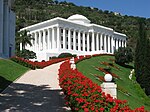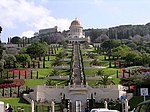Tikotin Museum of Japanese Art
1960 establishments in IsraelArt museums and galleries in IsraelArt museums established in 1960Asian art museumsBuildings and structures in Haifa ... and 4 more
Ethnic museums in IsraelModernist architecture in IsraelMuseums in HaifaMuseums of Japanese culture abroad

The Tikotin Museum of Japanese Art is a museum on the crest of Mount Carmel, in Haifa, Israel, dedicated to the preservation and exhibition of Japanese art. It is the only such museum in the Middle East. It was established in 1959 on the initiative of Felix Tikotin of the Netherlands, and Abba Hushi, then mayor of Haifa.
Excerpt from the Wikipedia article Tikotin Museum of Japanese Art (License: CC BY-SA 3.0, Authors, Images).Tikotin Museum of Japanese Art
HaNasi Avenue, Haifa Merkaz HaCarmel
Geographical coordinates (GPS) Address External links Nearby Places Show on map
Geographical coordinates (GPS)
| Latitude | Longitude |
|---|---|
| N 32.8093 ° | E 34.9854 ° |
Address
מוזיאון טיקוטין לאמנות יפנית
HaNasi Avenue
3463626 Haifa, Merkaz HaCarmel
Haifa District, Israel
Open on Google Maps








